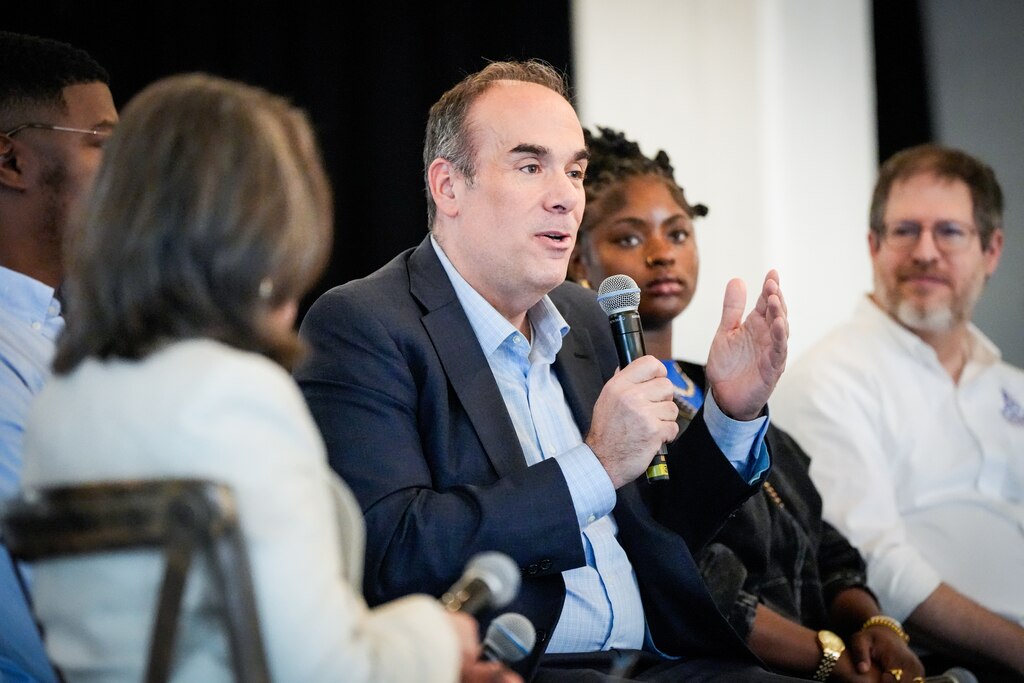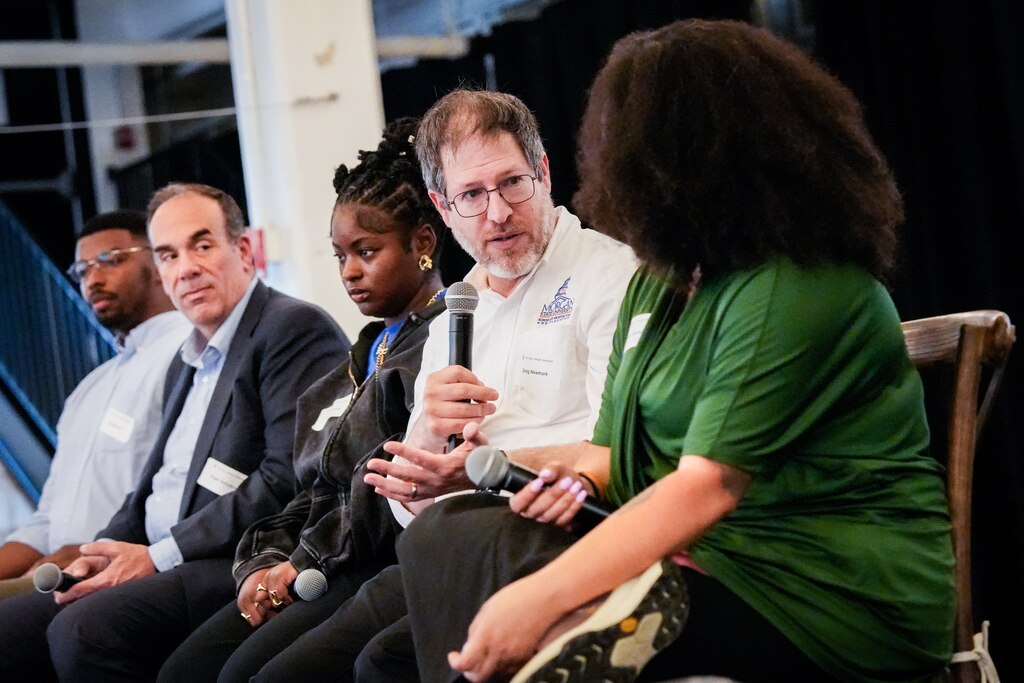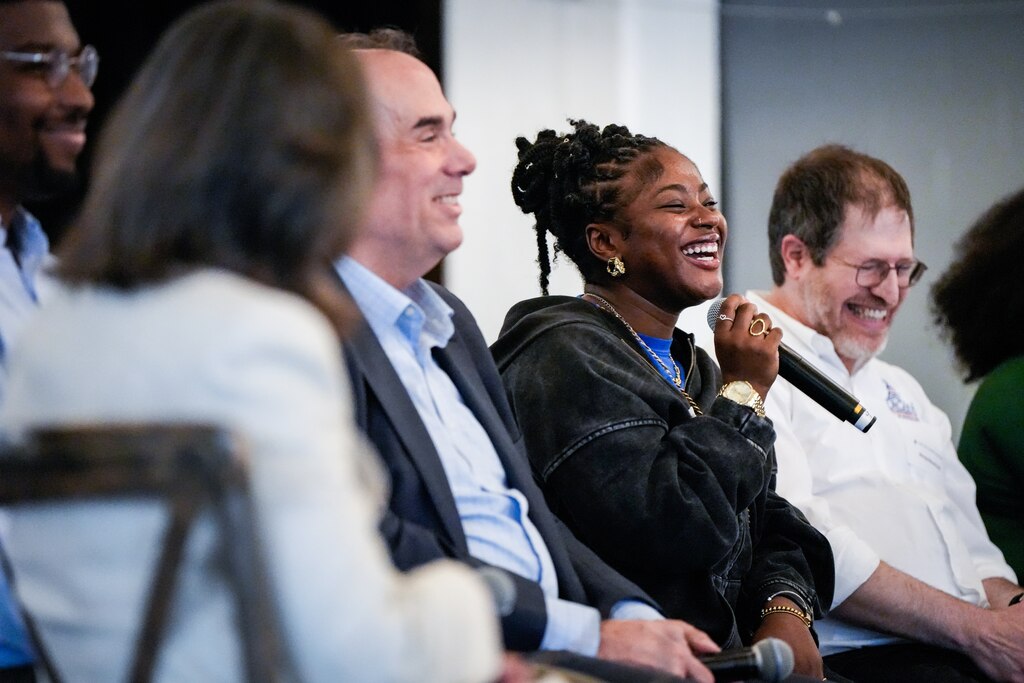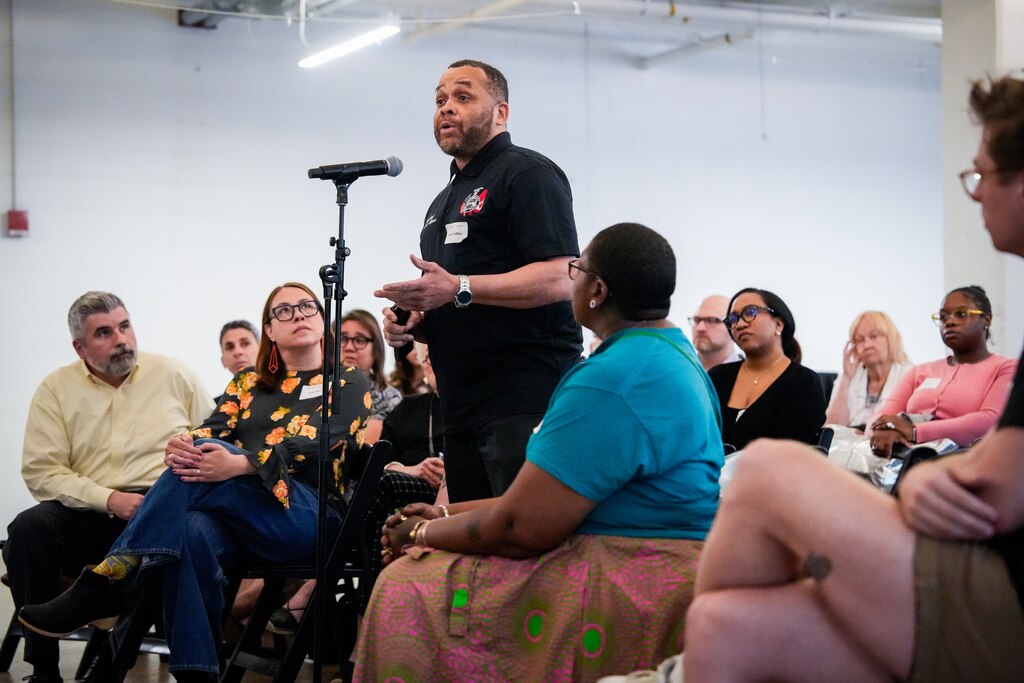It shouldn’t be this hard for kids to get to school. But there are things city and state leaders can do about it at little to no cost.
That was the consensus from a community discussion The Baltimore Banner hosted Monday night on solutions to the transit nightmare city kids face every day getting to their middle and high schools. A Banner investigation found that as many as 25,000 kids use public transit to get to school — but with 1 in 4 buses students use either arriving late or not at all, it’s nearly impossible for them to make it on time every day.
Here are five takeaways from the panel discussion, which gathered input from experts, advocates, school system leaders and the students impacted by the lack of action so far.
First step: Survey students
To understand the scope of the problem, someone needs to count how many kids are taking the bus. Nobody, including Baltimore City Public Schools, has committed to doing so.
The Baltimore Banner thanks its sponsors. Become one.
But School Board Commissioner Ashley Esposito said Monday that if the Maryland Transit Administration can’t do it, “I think we’re well positioned as a school system to collect that data and support whatever feedback they need.” Greg Newmark, an associate professor and transit researcher at Morgan State University, said his school could help.
Both MTA Administrator Holly Arnold and City Schools CEO Sonja Santelises declined to be panelists.
Read More
A survey could gather statistics from bus riders like Brooke Bourne, a senior at Western High School. Bourne said some of her classmates leave school five minutes early in hopes of snagging even a standing spot on their bus ride home.
Sometimes, when making her connection, Bourne will get off her first bus as the second pulls away.
“No remorse from the bus driver at all — they’ll just look at you, maybe even smile," Bourne said. “I shouldn’t have to wait another 40 minutes or an hour for my bus to get to me.”
The Baltimore Banner thanks its sponsors. Become one.
Design transit with students in mind
When determining which transit routes would best serve city residents, the Maryland Transit Administration doesn’t survey anyone under 18, said Roger Schulman, president and CEO of the Fund for Educational Excellence. His nonprofit studied student transportation extensively and reported its findings in 2021.
That leaves Baltimore City students, who lose access to yellow buses after fifth grade, largely out of the MTA’s calculations, though the administration does run supplemental “tripper” routes to certain schools.
 School Board Commissioner Ashley Esposito fields a question.
School Board Commissioner Ashley Esposito fields a question. Roger Schulman, president and CEO of the Fund for Educational Excellence, answers a question Monday evening.
Roger Schulman, president and CEO of the Fund for Educational Excellence, answers a question Monday evening.Schulman said there’s a pervasive idea that public transit was created to serve the general public, not get kids to and from school.
“What is so staggering to me about this is that people do not consider our students part of the general public,” Schulman said. One audience member said students should be prioritized, instead.
Fix city infrastructure
Newmark said part of the problem is Baltimore itself. Traffic signals are “crazy old,” he said, and need to be manually reset on a regular basis. Issues like “bus bunching” — when multiple buses on the same route show up one right after another — make it impossible to implement express buses for longer rides because drivers can’t detour around existing buses, Newmark said.
The Baltimore Banner thanks its sponsors. Become one.
“A lot of what would make the buses run more effectively is making just the streets run more effectively,” Newmark said. “The streets are not great in Baltimore.”
That may make it easier for the MTA to ensure its buses are on schedule. MTA buses are considered on time if they’re no more than two minutes early or seven minutes late, which Newmark said is the “most lenient standard” he’s ever heard of.
 Greg Newmark, associate professor and transit researcher at Morgan State University, answers a question from the audience.
Greg Newmark, associate professor and transit researcher at Morgan State University, answers a question from the audience. Western High School senior Brooke Bourne said some of her classmates leave school five minutes early in hopes of snagging even a standing spot on their bus ride home.
Western High School senior Brooke Bourne said some of her classmates leave school five minutes early in hopes of snagging even a standing spot on their bus ride home.Consider diverse student needs
A Baltimore School for the Arts student said the 8 p.m. cutoff on the passes students use to ride the bus for free can complicate life for kids who ride at late hours. Plus, the student said, walks to and from buses can be long and strenuous for disabled students like them.
Bourne said she’s working to get the Maryland General Assembly to consider solutions that serve the city’s disabled and student populations.
“I do feel like that the 8 o’clock curfew is kind of off-putting, especially for students with extracurriculars or jobs,” Bourne said. “We hear you, we see you, and we are trying as hard as possible.”
The Baltimore Banner thanks its sponsors. Become one.
Find out what’s worked before
Michael McMillan, president of the union that represents MTA’s public transit employees, has worked as a bus driver for 15 years.
He said in the late 1990s, MTA serviced most middle and all high schools. But about a decade ago, as the transit system expanded, dedicated school routes got pulled. And in the last 20 years, Baltimore started allowing students to choose what middle and high school they attend, no matter where it is. Esposito said the board is exploring how school choice complicates busing and chronic absenteeism.
 Attendee Michael McMillan addresses the panel from the audience.
Attendee Michael McMillan addresses the panel from the audience.McMillan said he remembers how proud he and other bus drivers were to get kids to several schools in the morning and afternoon.
“When you get that disinvestment, you start hiring less bus operators, changing things, trying to say, ‘Hey, we’re moving with the time.’ And that’s what has happened over the years with the transportation in Maryland,” McMillan said. “There’s a way to get back to it. You’ve just got to go through the history to find it.”
About the Education Hub
This reporting is part of The Banner’s Education Hub, community-funded journalism that provides parents with resources they need to make decisions about how their children learn. Read more.



Comments
Welcome to The Banner's subscriber-only commenting community. Please review our community guidelines.